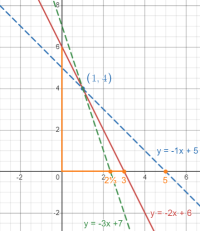Through the point (1, 4), draw a line such that the sum of the lengths of the
waits (on the positive parts of the coordinate axes) is the smallest. The result should be x/3+y/6=1
I know It’s simple but I have been looking at it for an hours and I don’t know how to do it
Thanks in advance
waits (on the positive parts of the coordinate axes) is the smallest. The result should be x/3+y/6=1
I know It’s simple but I have been looking at it for an hours and I don’t know how to do it
Thanks in advance

